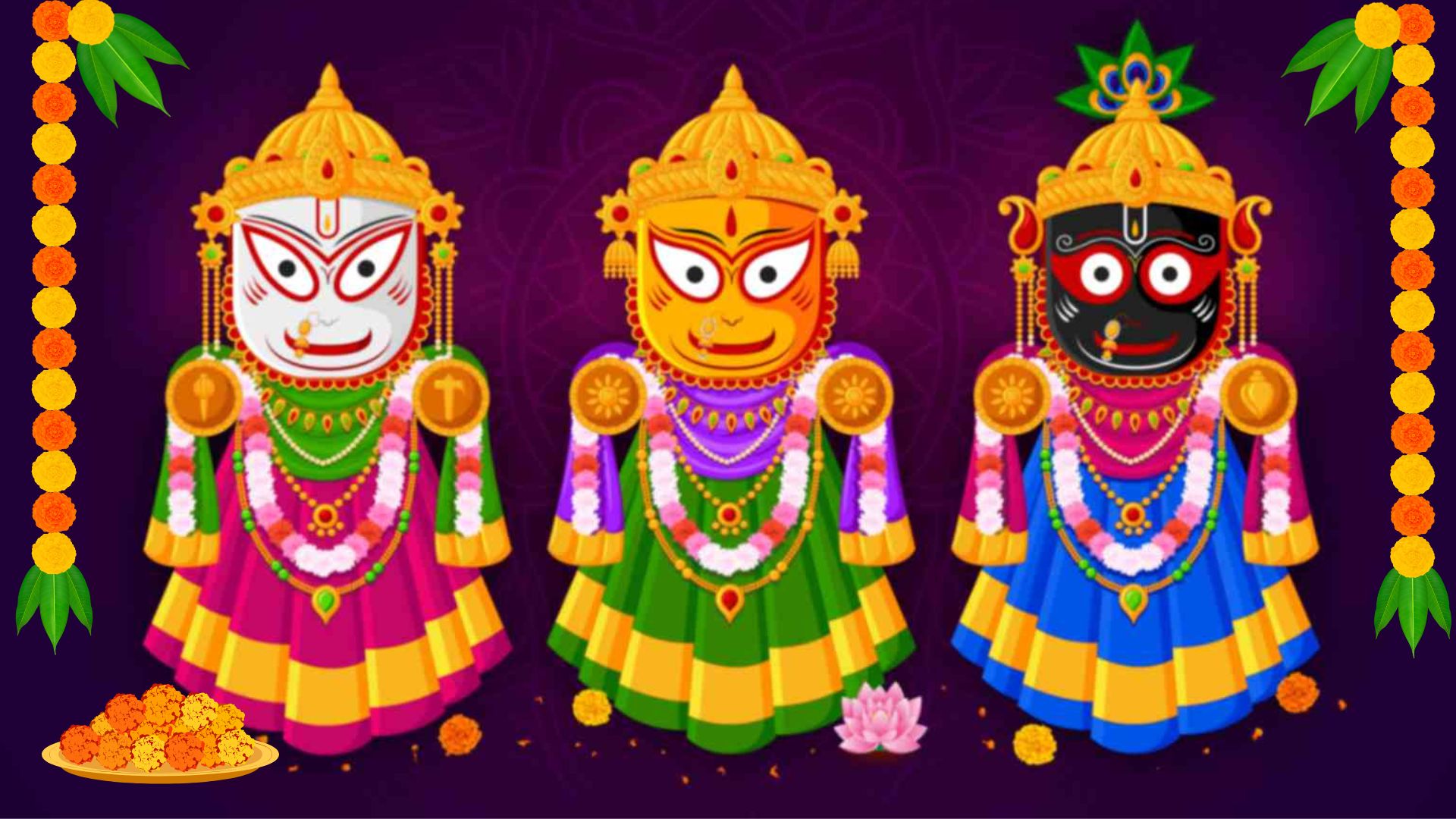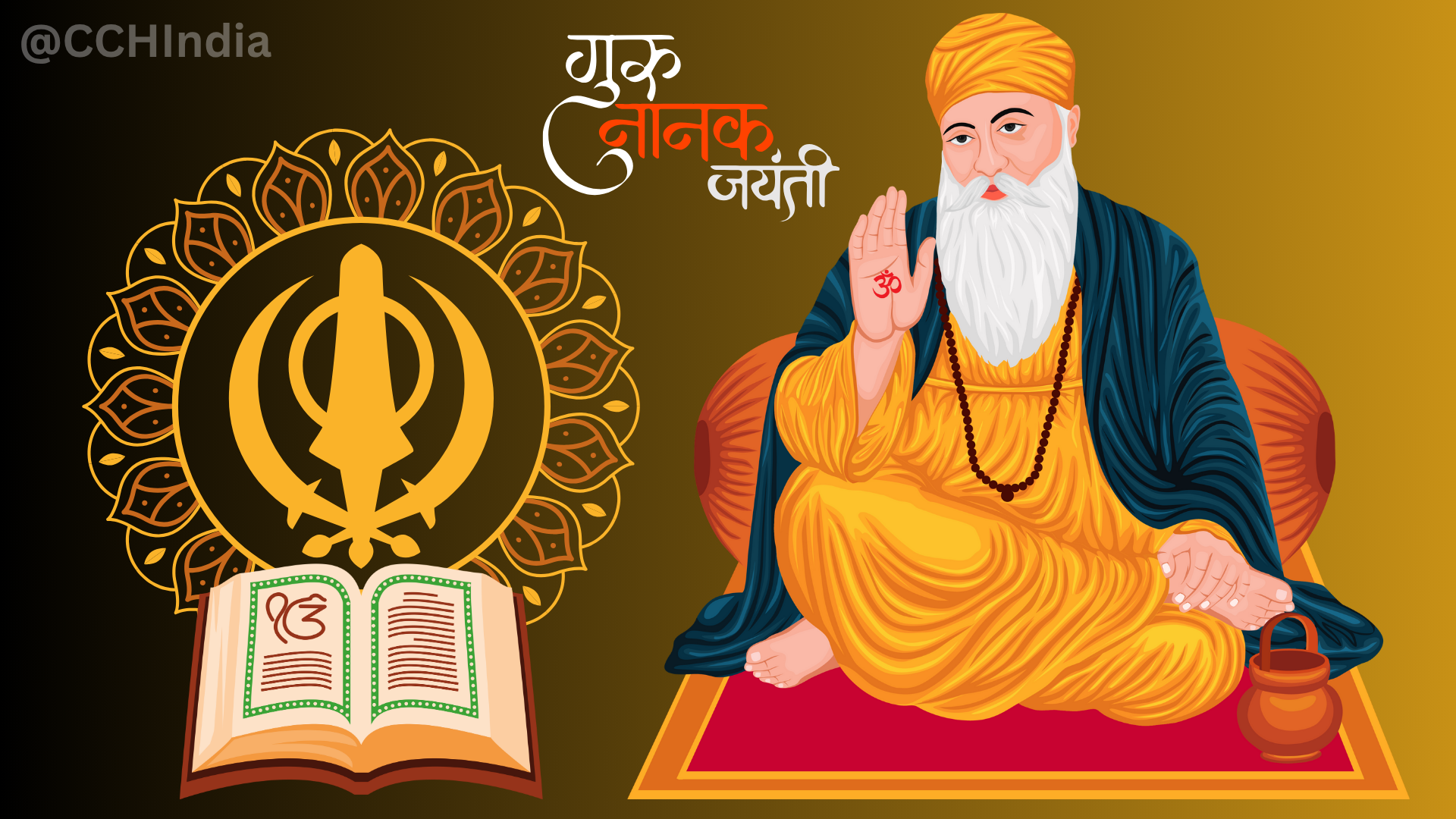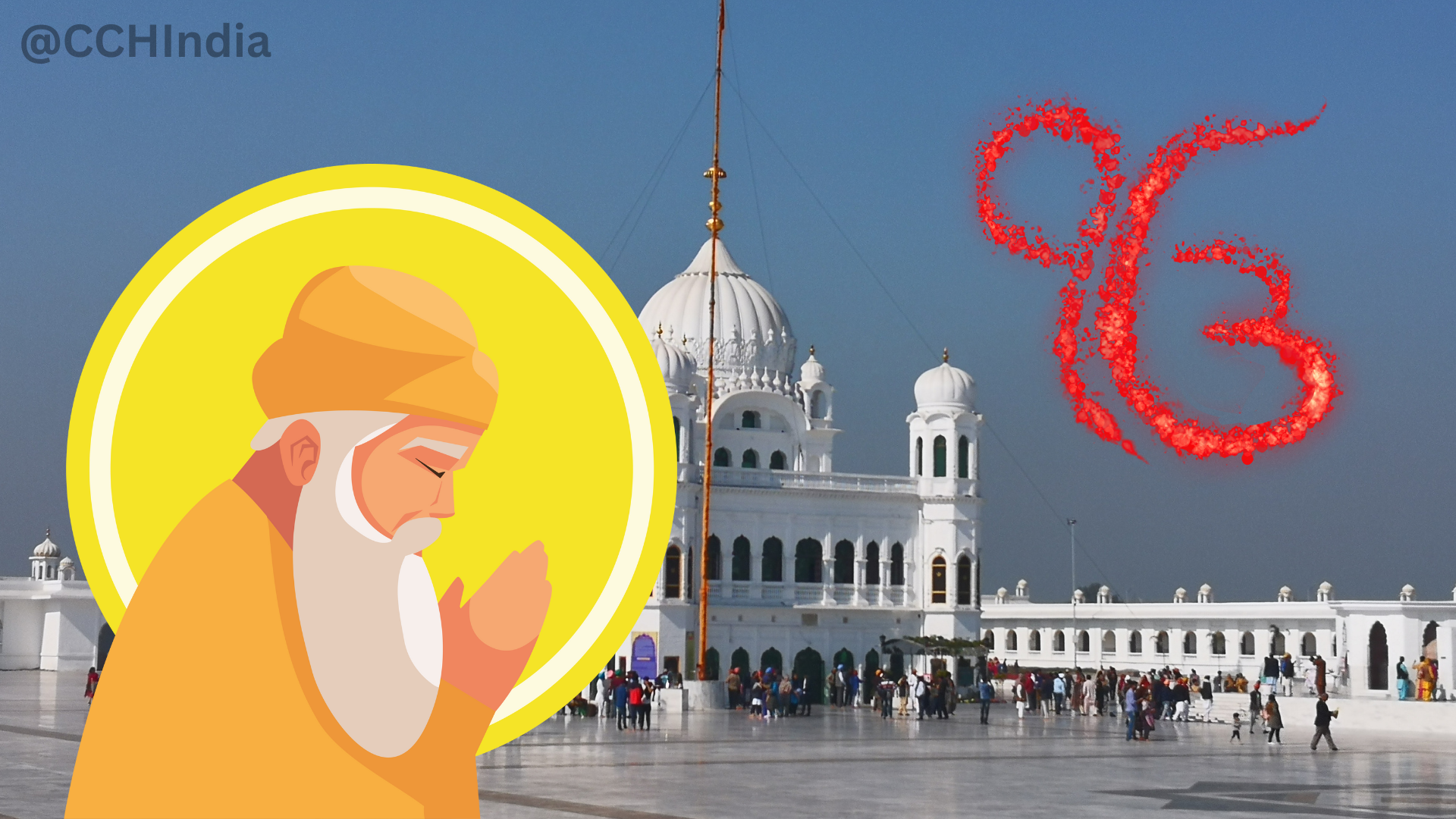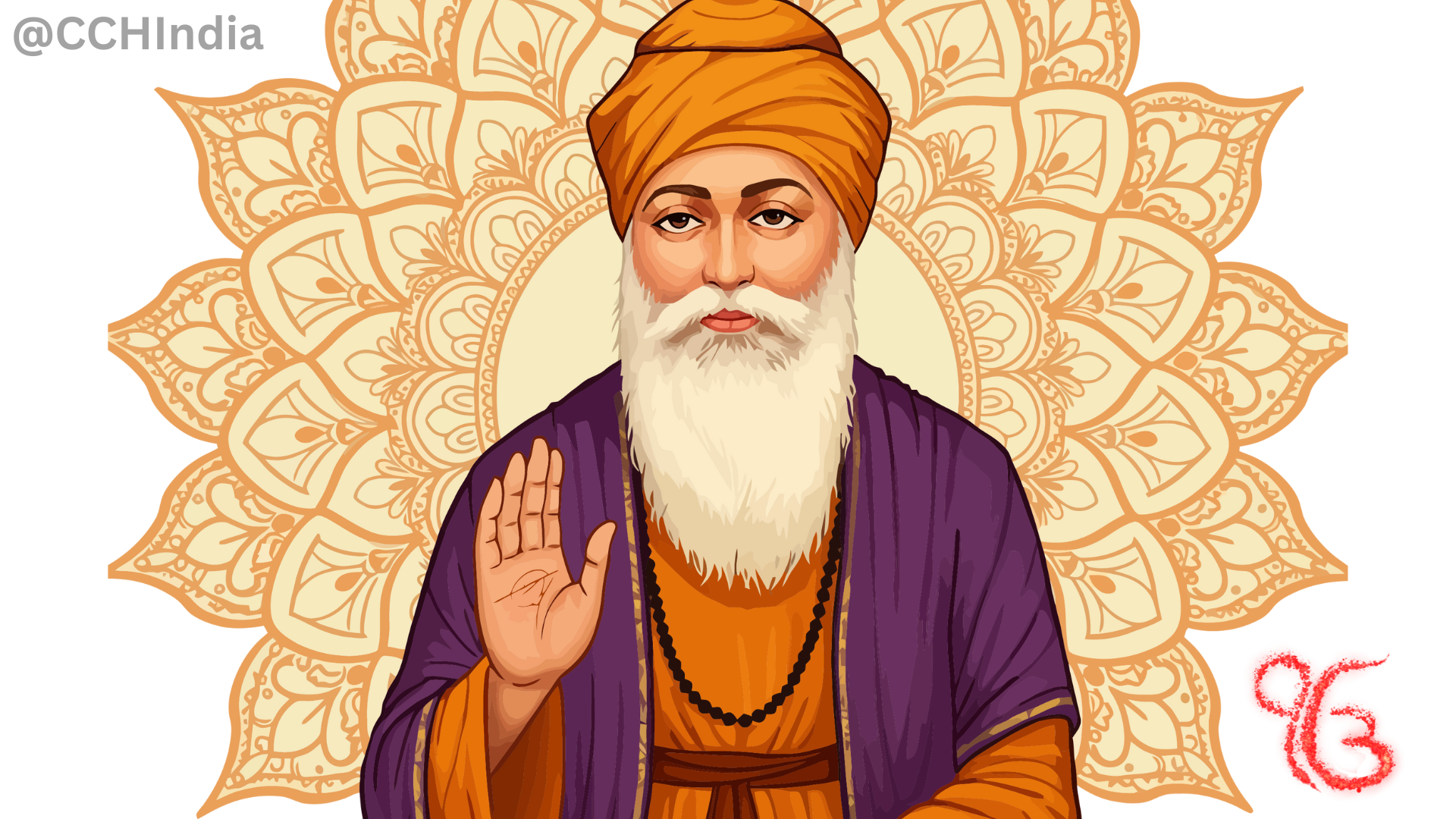Guru Nanak Jayanti Wishes, Quotes, and Messages to Share
Celebrate Guru Nanak Jayanti 2025 with inspiring wishes, quotes, and messages that reflect the divine teachings of Guru Nanak Dev Ji.

Lord Jagannath is an incarnation of the Lord Vishnu in Hindu Religion. This festival and yatra is dedicated to him along with his elder brother Lord Balabhadra (Balrama) and his sister Goddess Subhadra.
The Jagannath Rath Yatra (Chariot Procession) is an annual festival held in Puri, Orissa (Odisha). It is one of the most grand religious celebrations in India attracting millions of devotees from across the globe.
In this rath yatra Lord Jagannath travels a distance of approximately 3 Kms from their home i.e. the Jagannath temple to their Maussi’s (Mother’s sister/Aunt) house. This journey has an immense spiritual and religious importance in hindu culture. This festival also has a substantial economic impact.
Table of contents [Show]
Puri is a spiritual town situated in the state of Odisha and houses the revered Jagannath Temple. The annual ceremonial Jagannath rath yatra of the trio Lord Jagannath, Lord Balabhadra, and Goddess Subhadra takes place here. It is also called the ‘Festival of Chariots’. It takes place every year in June or July
This yatra, which is of approximately 3 Kms, symbolically represents the trio’s visit to their maternal aunt's house and is a spiritual journey and a cultural spectacle. This festival has something for everyone. Pilgrims which seek a spiritual experience, tourists who are interested in cultural experience and local communities which are there to participate in the communal celebration.
The Jagannath Rath Yatra is an integral part of the Hindu religion and are found to be mentioned in scriptures such as the Skanda Purana.
The legend says that following the earthly demise of Lord Krishna, his mortal remains floated off to the shores of Puri. They did not decompose. King Indradyumna who was the ruler of the region at the time got a dream in which he was instructed to build a temple and enshrine Krishna’s remains within a wooden form. The task was obviously a formidable one and was undertaken by the divine architect Vishwakarma. He carved three wooden figures of the sacred deities - Lord Jagannath, Lord Balabhadra, and Goddess Subhadra from the pious neem wood. However, the figures are incomplete.
Before Lord Vishwakarma was to start his task, a critical condition was put forth for him. The divine work was to be conducted in absolute seclusion, away from public gaze and without any disturbances. However, King Indradyumna's patience wore out after fourteen days of silence from the carving chamber. He intervened by opening the door. The disturbance made Lord Vishwakarma vanish and the divine idols remained in an incomplete state. They only had a face with beautiful captivating eyes.
The incomplete idols of the Lord Krishna, Lord Balrama and Goddess Subhadra were not perceived as a flaw. In fact, it held a profound spiritual symbolism. The absence of hands and feet signifies Lord’s dependence on the service of his devotees, emphasizing on the path of Bhakti Yoga or devotional service. At the same time, the large mesmerizing eyes signifies Lord’s all-seeing nature and limitless compassion.
While the idols are incomplete, they encourage the devotees to look beyond the imperfection of the external appearances and connect with the spiritual essence within.
The Jagannath Temple, a highly revered pilgrimage site in Odisha was constructed in 12th Century BC by King Anantavarman Chodaganga Deva of the Eastern Ganga dynasty. It is considered as one of the Char Dham pilgrimage sites in Hinduism.
However, the religious texts suggest that the Rath Yatra has been celebrated for thousands of years, origins tracing back to the Dvapara Yuga.
The legend has many versions and similarities, mostly in the form of tales told across India. The actual narrative is that brothers and the sister travel to their maternal aunt;s home to the Gundicha temple. There are parallels to this story. One where Lord Krishna travels to Vrindavan to meet his devoted followers where they took his chariot home with them. Another story is that of an incident where Lord Krishna, accompanied by his brother Balaram and sister Subhadra, visited Kurukshetra during a solar eclipse.
Another associated legend with the Jagannath Yatra is that Goddess Lakshmi is left behind in the temple when Lord Jagannath embarks on his annual Journey to Gundicha Temple with his siblings. On Hera Panchami, i.e the fifth day after the rath yatra, Goddess Lakshmi in her anger, travels to Gundicha temple to confront the deities and insist on their return.
The Jagannath Rath Yatra is so much more than just a religious procession. The Jagannath rath yatra, inculcates a spiritual awakening, consistent effort and unwavering dedication amongst the devotees of Krishna. It is a manifestation of deep-seated faith, divine love and devotion. The whole act of bringing the deities out of the temple’s sanctum and pulling them through the streets symbolizes Lord Jagannath's descent from his throne and his journey amongst the devotees, being accessible to one and all. It is different from the traditional methods of worship.
This yatra promotes unity and equality amongst people of all walks of life, irrespective of their social class, background or faith. The entire procession along with the chariots and deities is considered as one entity moving in a divine rhythmic manner. This festival extends a welcoming embrace to all, dismantling invisible and societal barriers amongst communities in a shared celebration of love and devotion.
It is believed that pulling the chariots of the deities has immense spiritual blessings. Vedic scriptures suggest that by merely seeing Lord Jagannath and his siblings on the Chariot, looking in their majestic eyes or simply touching the ropes of the chariot can cleanse countless lifetimes of karma.
The Jagannath Rath Yatra is all about humanizing the divine and making him more accessible. Snana Purmina marks the beginning of the Jagannath Rath Yatra. A grand bathing festival happens on this day where Lord Jagannath, Lord Balrama and Goddess Subhadra are given a ceremonial bath post in which they are believed to fall ill. Due to their illness they enter a period of seclusion, remaining out of the public view for a fortnight, a period known as Anasara or Anavasara. During this time, special servants called Daitapatis attend to them and cooked food offerings are temporarily suspended.
Jagannath Puri Yatra also serves as a medium to promote eco-friendly celebration practices and humanitarian & social events.
Organisations like ISKCON highly advocate eco-friendly and sustainable celebration practices. These practices include use of natural materials, flowers, incense made out of dried flowers, vegetarian food, not allowing food to be wasted. They also promote community clean up drives post celebration taking care of the environment with focus on trash segregated disposal.
This Yatra also serves as a vital platform for social service world over. Not just in Puri, but across the world within hindu communities, large scale Bhandaras (food distribution) take place for the needy, health camps are organised, clothes distribution takes place and educational initiatives are also undertaken in order to uplift the lives of those one possibly can albeit for a short duration. These acts embody principles of seva or selfless service to the community.

Celebrate Guru Nanak Jayanti 2025 with inspiring wishes, quotes, and messages that reflect the divine teachings of Guru Nanak Dev Ji.

Discover Guru Nanak Dev Ji’s divine journey from Nankana Sahib to Kartarpur, spreading the message of peace, equality, and universal brotherhood.

Discover 10 timeless quotes by Guru Nanak Dev Ji that inspire peace, compassion, and oneness. Explore his divine words that continue to guide humanity toward truth and harmony.

Discover Guru Nanak Dev Ji’s timeless message of Oneness, Equality, and Universal Love. Learn how his teachings of compassion, selfless service, and truth can guide humanity toward peace and unity.

